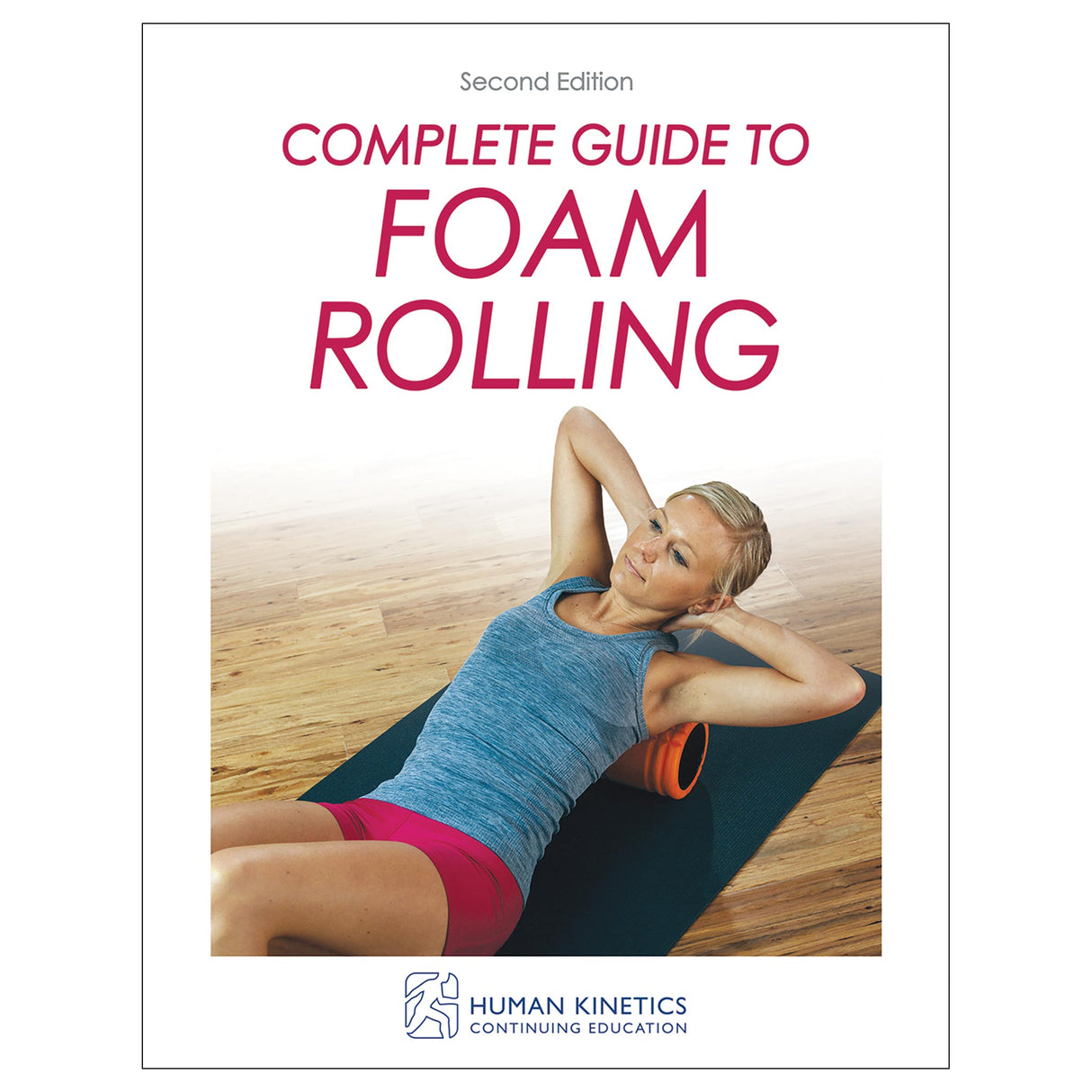Complete Guide to Foam Rolling 2nd Edition Online CE Exam With Print Book
Author: Human Kinetics
This title will be released on December 31, 2025
$132.95 CAD
This package includes the following:
- Complete Guide to Foam Rolling, Second Edition, book
- Online continuing education exam
Complete Guide to Foam Rolling, Second Edition, is the essential resource to help your clients move better, feel better, and recover more effectively. Foam rolling before, during, or after a workout can help increase blood circulation, allowing muscles to work more efficiently, and can reduce stiffness, enhance range of motion, and initiate the recovery process to reduce soreness.
The second edition is now in full color and has been extensively updated with new information about the benefits of foam rolling and similar devices, such as percussion massagers. With the latest research included, you will discover the scientific rationale behind using foam rollers to aid in recovery.
You’ll learn to apply the science of foam rolling with step-by-step instructions for 37 of the most effective foam rolling techniques for muscle preparation and recovery. Use therapeutic movements to help ease pain and restore function—all while reducing the risk of injury. Learn how clients should breathe, relax, and roll through tight spots as part of warm-up, flexibility work, and recovery. Then adapt any of the ready-to-use protocols or create a customized program to address specific client problem areas as well as overall muscle and nervous system needs.
Complete Guide to Foam Rolling, Second Edition, is your guide to effectively implementing foam rolling with clients. Help clients give themselves the care and attention needed to rest, recover, and perform at their very best.
After reading the book, certified professionals can take the companion CE exam to earn continuing education credits.
Learning Objectives
- Understand current research on self-myofascial rolling techniques and application.
- Identify the benefits of foam rolling in athletic applications.
- Apply foam rolling best practices to warm-ups and workouts.
- Recognize when foam rolling is contraindicated for a particular chronic condition.
- Identify the anatomical regions or landmarks that self-myofascial rolling should not be applied to.
- Demonstrate appropriate foam rolling techniques (such as pressure, time, and oscillation speed and distance) for each major muscle group.
- Explain the functional anatomy of each major muscle group.
- Implement the best movement screening tool for the needs and goals of the individual.
- Assess the movement faults in movement screening and their implications on functional anatomy.
Audience
Certified strength and conditioning professionals, personal trainers, and athletic trainers looking to learn more about foam rolling and its role in the recovery process.
Part I. Foundations
Chapter 1. Science of Foam Rolling
Chapter 2. Benefits of Foam Rolling
Chapter 3. Foam Rolling Safety
Chapter 4. Foam Rolling Equipment
Part II. Techniques
Chapter 5. Foot and Lower Leg
Chapter 6. Upper Leg
Chapter 7. Hips
Chapter 8. Chest and Upper Back
Chapter 9. Shoulders and Arms
Part III. Programming
Chapter 10. Movement Assessments
Chapter 11. Warm-Up
Chapter 12. Flexibility
Chapter 13. Recovery
Chapter 14. Rehabilitation





